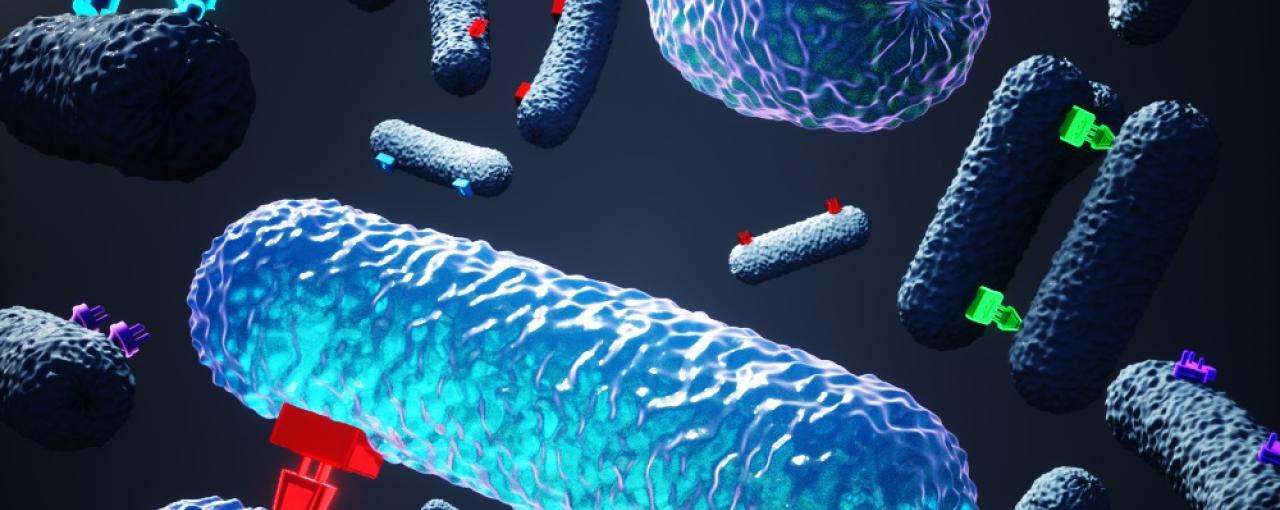Scientists at the Research Complex at Harwell have collaborated in a study published in Nature Microbiology that reveals new details about how bacteria transfer DNA in order to resist antibiotics.
Conjugation is the transfer of genetic material between bacterial cells by direct cell-to-cell contact or by a bridge-like connection between two cells. It facilitates the spread of virulence with harmful bacteria acquiring resistance to antibiotics in this DNA exchange. Since its discovery in the 1940s, research has focused on bacterial conjugation, in particular how the bacterial cells prepare for transfer but what has not been studied is the mechanism by which donor and recipient bacteria make the connections that enable efficient DNA transfer to occur.
Antibiotic resistance is of enormous concern. Huge breakthroughs in medicine to treat diseases such as malaria and HIV could be at risk of antibiotic resistance with the potential for such diseases to spread out of control. Furthermore, the pace of discovering new antibiotics has significantly slowed. Bacteria and other pathogens are always developing to resist drugs designed to contain them.
Dr Konstantinos Beis and Ms Chloe Seddon from the Department of Life Sciences at Imperial, who are based at Research Complex, have been working with Professor Gad Frankel, Ms Wen Wen Low and colleagues at the MRC Centre for Molecular Microbiology and Infection to reveal the proteins that allow bacterial conjugation to take place. In collaboration with Prof Egelman, University of Virginia, they used cryo-electron microscopy to visualise the intimate attachment process. This new discovery could pave the way to help scientists predict and potentially stall the spread of the antibiotic resistance.
‘The team found that during conjugation, a protein from the donor bacteria, termed TraN, acts as a ‘plug’ to attach itself to a unique outer membrane receptor, or ‘socket’, in recipient bacteria’. Plasmids, which are packets of DNA that contain the codes for certain functions including antimicrobial resistance, express one of four variants of the protein TraN during conjugation, with each variant binding a specific outer membrane receptor in the recipient bacteria, which enables efficient transfer of plasmids from one cell to the other.’ (Source: ‘Bacterial intimacy insights could help tackle antimicrobial resistance’, Imperial College London, 13th June 2022)
Dr Beis says, “These findings present a key advancement in understanding how conjugative mating pairs are formed and will allow us to predict the spread of emerging resistance plasmids into high-risk bacterial pathogens.”
Wen Wen Low, Joshua L. C. Wong, Leticia C. Beltran, Chloe Seddon, Sophia David, Hok-Sau Kwong, Tatiana Bizeau, Fengbin Wang, Alejandro Peña, Tiago R. D. Costa, Bach Pham, Min Chen, Edward H. Egelman, Konstantinos Beis & Gad Frankel, Mating pair stabilization mediates bacterial conjugation species specificity, Nature Microbiology (2022).


